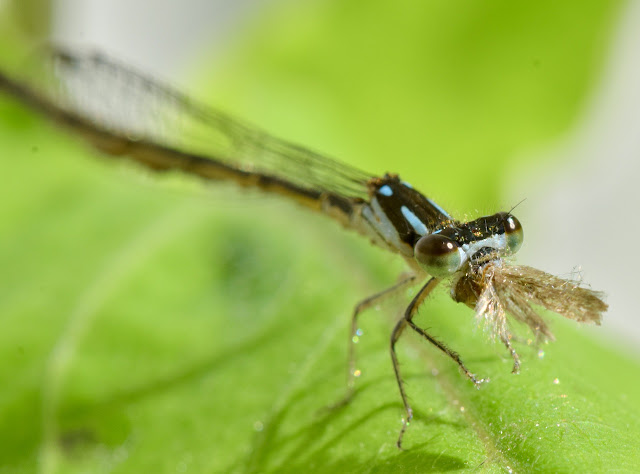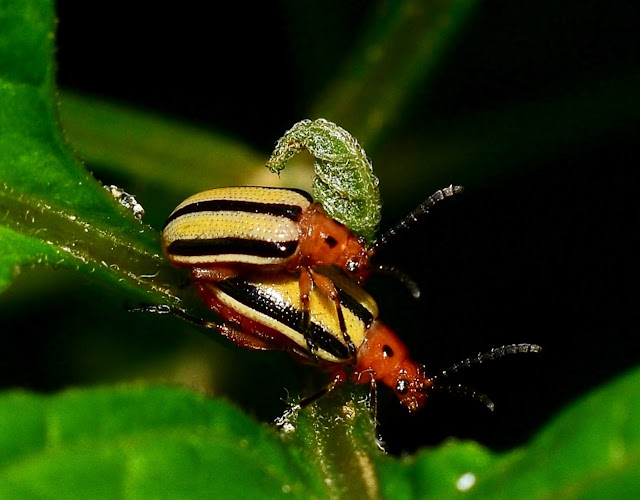Comics by Bernie and Nature!
New Special Edition: Insect Predation
Laugh and Learn
De-bugging insects
What do meat-eating insects eat for breakfast, lunch, and dinner, or even a snack? Can you hear them crunching? What happens to the not-so-good-tasting bits and pieces?
Nature-inspired single-panel comics Insect Predation Series aims to explore observations of the meat eaters and occasionally the vegetarians as well, while they chase down, chew down, and occasionally just paralyze their prey for later consumption by them or their offspring.
Nature Comic Predation Series Menu # 2, Oct 7, 2023When did eating wings become popular?"I have always eaten the wings, long before you folks started deep-frying them and serving them with celery and blue cheese dressing." -F.F.
Widespread and common in Vermont, but less frequently encountered than Eastern Forktail (I. verticalis). May be somewhat underreported due to its tendency to stay low within the vegetation. Found in a wide range of habitats, often vegetated pond edges and river edges. Somewhat more likely at lower elevations, but can be found in mountainous areas as well. - Vt Ctr for Ecostudies
When did eating wings become popular?
"I have always eaten the wings,
long before you folks started deep-frying them
and serving them with celery and blue cheese dressing." -F.F.
Widespread and common in Vermont, but less frequently encountered than Eastern Forktail (I. verticalis). May be somewhat underreported due to its tendency to stay low within the vegetation. Found in a wide range of habitats, often vegetated pond edges and river edges. Somewhat more likely at lower elevations, but can be found in mountainous areas as well. - Vt Ctr for Ecostudies
Nature Comic Predation Series Menu # 1, Sept 23, 2023
How to avoid a dreaded lunch date
OK, roll over and play dead,
but I am still going to have you (over)
for lunch.
Eumenid wasps have a stereotypical “wasp” look to them, but they are solitary and not aggressive like social wasps that are found in the family Vespidae. They are generally black with yellow bands and markings. At rest, their wings fold longitudinally and may appear very thin. They range in size from very small to medium. Euodynerus foraminatus are medium-sized black wasps with yellow bands and markings.
Euodynerus foraminatus is in the family Vespidae, in the subfamily Eumeninae. Eumenids are solitary nest-building wasps that stock their nests with many individuals of some species of leaf-eating arthropod prey (like caterpillars). As such, they can be helpful to gardeners.
Stay tuned for more Insect Predaton coming soon
In the meantime,
Continue Laughing and Learning with Nature-Inspired comics




